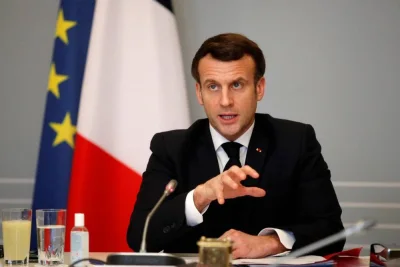AFP/Kiev
Ukraine’s Western-backed leadership vowed yesterday to conduct a full enquiry into allegations the army used banned “cluster bombs” in its push against pro-Russian insurgents in the separatist east.
Human Rights Watch (HRW) has published an investigation conducted jointly with the New York Times identifying 12 incidents in which the highly-imprecise munitions killed six people – including a Swiss aid worker – in and around the rebel-held city of Donetsk earlier this month.
The global rights group said there appeared to be “widespread” use of one of the deadliest and most controversial conventional weapons of the past century.
The report supported claims made throughout the conflict by Russia that Ukraine was abusing the goodwill of its US and European allies by violating human rights and killing hundreds and possibly thousands of civilians.
“It is shocking to see a weapon that most countries have banned used so extensively in eastern Ukraine,” said HRW researcher Mark Hiznay.
The report said one of the attacks killed a Swiss International Committee of the Red Cross worker in Donetsk on October 2.
HRW urged Ukrainian forces to “immediately make a commitment not to use cluster munitions” and for the government to “accede to the treaty banning their use”.
The 2008 Convention on Cluster Munitions banning their use has been signed by 113 parties but not Ukraine or the United States.
However, Russia’s similar refusal to sign on to the treaty has not kept the Kremlin-controlled media from playing up rebel claims of these weapons being one of the main culprits of the entire six-month war.
Cluster munitions contain dozens or even hundreds of smaller explosives that are carried by bombs or rockets.
HRW said that these smaller explosives “are spread indiscriminately over a wide area, often the size of a football field”.
Ukrainian President Petro Poroshenko’s deputy chief of staff expressed surprise and suggested that the use of cluster bombs – if confirmed – had never been authorised by the political leaders in Kiev.
“I am not ready to answer this question because we still have to conduct our own internal investigation,” Valeriy Chaly told reporters. “We have taken note of the report.”
Two senior Ukrainian military officials denied using such weapons when contacted by AFP.
Military analysts had warned throughout the crisis that some Ukrainian units – under-funded and lacking the modern equipment the rebels were allegedly receiving from Russia – were operating according to their own rules.
“These charges are groundless,” said Ukrainian defence ministry spokesman Bogdan Senyk.
Eastern campaign spokesman Vladyslav Seleznyov rejected what the rights group said was evidence of shelling by government forces of neighbourhoods in industrial cities such as Donetsk – home to nearly a million people before the war.
“We do not shell civilian neighbourhoods because this endangers lives. But our opponents constantly attack these neighbourhoods,” Seleznyov said by telephone.
AFP reporters across the eastern industrial war zone have witnessed repeated shelling attacks on city districts that have contributed to a total death toll the United Nations estimates at 3,700.
Yet it is usually impossible to say with certainty whether which side – insurgent or army – fired these shells and rockets.
Most attacks are conducted from a distance of a few dozen kilometres and both sides accuse the other of responsibility.
HRW said that “while not conclusive, circumstances indicate that anti-government forces might have been responsible for the use of cluster munitions”.
Separatist leaders issued no immediate comment.

A pro-Russian separatist fighter stands in front of part of a ballistic missile Totchka-U yesterday in Donetsk. Ukraine’s Western-backed leadership vo


